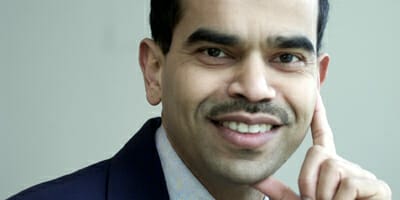Hedge funds are sheep in wolves’ clothing, they are claiming their returns to be alpha, but a large part of it is driven by beta, Narayan Naik, professor of finance, London Business School told delegates at an investment think-tank in London last week.
The good news, Naik says, is a new era has dawned in hedge fund investing where investable risk factors enable investors to identify genuine alpha producers and direct capital towards those managers and products, and the rest directed to risk-factor funds.
“This enables investor to use risk factors for portfolio completion, diversification, and tail-risk hedging purposes, “park” excess cash in a diversified basket of risk-factors until they find the right manager, and most importantly allows them to pay alpha-price for alpha-like returns and beta-price for beta-driven returns,” he says.
Naik told delegates that hedge fund returns look like an iceberg, there’s a little bit of alpha showing above the water and all the beta is under the water.
The returns, he says, are made up of alpha which is the return due to manager skill, and the remaining return drivers – the alternative beta, exotic beta and traditional betas – are the returns due to systematic risk factors.
The evolution of hedge fund offerings has seen alternative beta returns now captured using risk factors whereby the beta is constructed using liquid tradeable securities and their derivatives.
“Combining known risk factors such as rates curve, currency carry, equity liquidity, commodities momentum and value, emerging markets has meant that products can now capture a large part of hedge fund returns,” he says.
In 2007, the first hedge fund strategy clone was launched that delivered alternative beta-based returns but did not carry the high cost of the underlying active management (hedge fund fees).
“These clones are rules-based, cheap, highly transparent, with high degree of liquidity, institutional quality and free of headline risk,” he says.
“Of course sceptics say, can an auto pilot fly a plane better than a pilot? But if you look at hedge fund returns from June 2007 to February 2013 you can see that risk factors explain a lot of what the average hedge fund is doing, alternative risk factors capture a lot of their investment returns,” he says.
The next generation of funds have now arrived, Naik says, where the building blocks, or decomposed risk factors, can be used by investors to build their own basket of risk factors to suit their needs.
“A new era has dawned where investable risk factors enable you to identify genuine alpha producers. Most importantly it allows you to pay alpha-price for alpha-like returns and beta-price for beta-driven returns,” he says.
“Alpha is different for different people it is a nebulous concept. But I define it as what I can’t do or access in a cheap and transparent way. It is partly perception, partly what you can do versus what you can’t do.”
In answering the question if there is enough alpha around for investors to share, he says it is important to go back to expectations.
“What am I expecting from hedge funds, what should a manager earn after transaction costs before I pay 2:20?. You have to go back to expectations of what you want from hedge funds, what am I expecting from these investments and how does it complement the rest of the portfolio?
In looking at return and risk expectations Naik reminded delegates that between 2002 and 2010 the MSCI World worst 21 months produced -6.8 per cent, and the best 21 months produced 6.94 per cent.
The returns for the mega firms in the hedge fund world, those that hold 90 per cent of the hedge fund assets, for the worst 21 months were -0.4 per cent and the best 21 months were 1.6 per cent.
Naik cautioned investors there was agency problem in the concentration of assets in the hands of a few hedge fund managers. The capital distribution of the industry is such that the big funds seem to be getting bigger. The good old 80:20 rule appears to be more like 90:10 for the hedge fund industry, with 90 per cent of the assets are being managed by 10 per cent of the names.
“It’s the age-old saying you can’t be fired for buying IBM, the same thing applies to hedge funds today, you can’t be disciplined for buying the big funds like Highbridge, Bridgewater, Brevan Howard, Winton and so on. These choices seem to be driven, in part, by career concerns on the part of institutional investors – a common agency problem we face in delegated portfolio management.”



